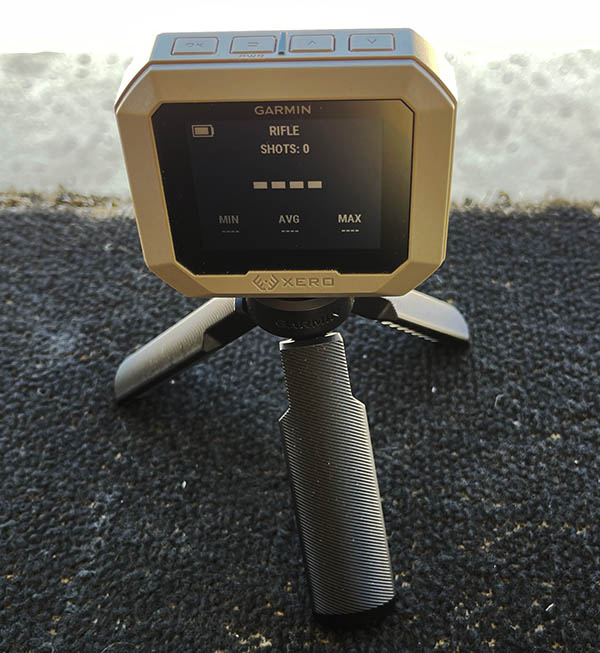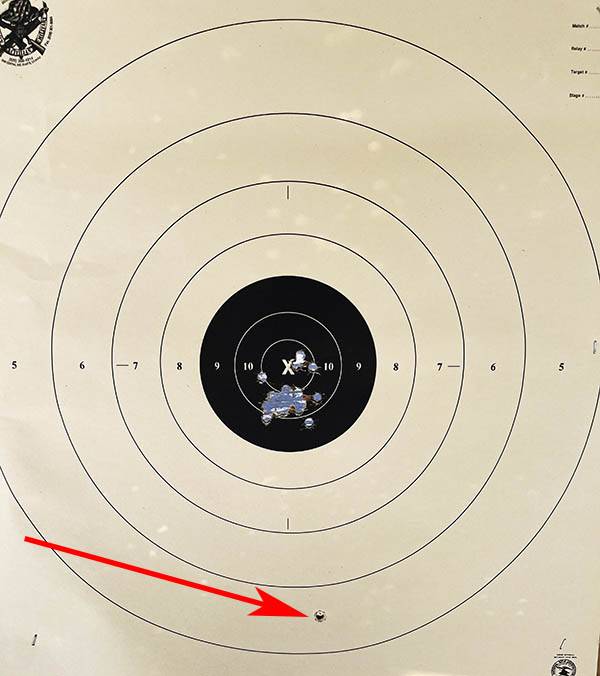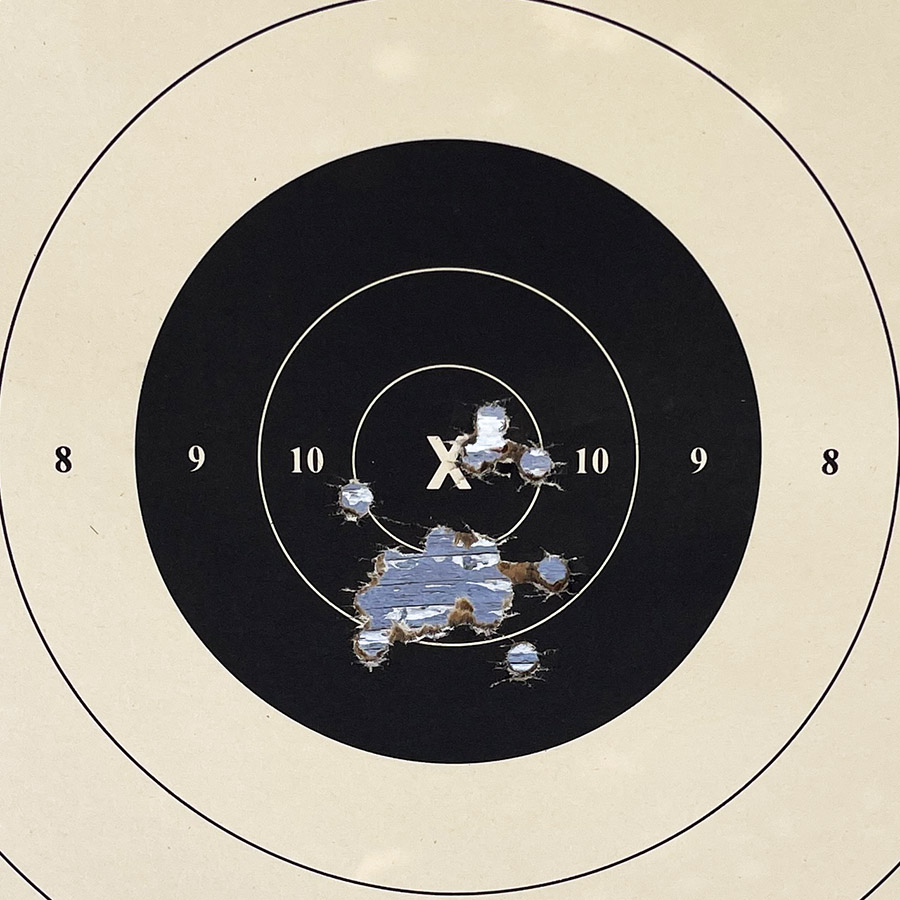By Joe Berk
I had a great day on the range last week with my friends and I did a lot of shooting, including trigger time with the .243 Ruger No. 1 and the .458 Win Mag No. 1 that I wrote about yesterday. I found another load that worked well with the .243 using the 55-grain Nosler bullet. It’s weird; the .243 No. 1 really likes the welterweight Nosler bullet. With all other bullets, it’s mediocre to terrible. But the .243 is a story for another blog. Today’s blog is an interesting follow up on the .458 Win Mag No. 1 story.

One of the guys (good buddy Russ) had the new Garmin chronograph. They are $600 and way easier to use than the old ones. You just set it on the bench and turn it on. There are no external wires, no ballistic screens, and no other stuff. It can download to your iPhone if you want it to.
I asked Russ if he would chronograph my .458 Win Mag load and he did. As a bit of background, my .458 Win Mag reduced load consists of 28 grains of SR 4759 propellant and the Remington 405-grain jacketed softpoint bullet. I’ve used this load for decades. I found it in an old Speer manual.

With Russ’s Garmin chronograph on my bench, I fired three or four shots. My friends and I were amazed at their consistency. Those first few shots were all right about 1100 feet per second, with an extreme spread of maybe 20 feet per second.
Then I thought I’d get cute. With this particular load, there’s a lot of unused volume in the cartridge case. I tilted a round up to settle the powder near the primer, thinking this would reduce shot-to-shot variability even more. That shot, however, had a perceptibly lighter report and it only registered 600 feet per second on the Garmin chronograph. I checked the rifle after I fired that round to make sure the bullet had cleared the bore, and it had. One of the guys commented that the 600-foot-per-second round sounded different. I picked up on that, too. Convinced that the bore was clear, I fired a few more rounds. They were all right around 1100 feet per second again.
As I walked downrange to the 50-yard target, I could see on ragged whole in the black bullseye as I approached it. I was thinking that even though the velocity was down sharply on that one slow round, it still grouped with the rest of the shots at 50 yards. Then I looked at the target more closely.

I don’t know what happened on that one 600-foot-per-second round. It could be that the powder settled in a manner that let the primer shoot over it, so when it lit off, the propellant generated less pressure. I always check all the rounds when I reload them (before seating the bullets), and I remember that the powder levels all looked good. It could be that the primer hole was obstructed by a piece of corn cob media from the brass cleaning operation, although I’m pretty good about clearing those, too, after vibratory cleaning. The round wasn’t a hangfire (there was no pause between the trigger tripping and the discharge); it just sounded lighter.
We all thought this was interesting. To me, it was interesting enough that I decided I’m going to buy a Garmin chronograph. I’ve resisted doing so in the past for several reasons:
-
- My primary interest in load development is accuracy. I have zero interest in maximizing velocity. I just want small groups on paper. If a load does that, I’m a happy camper. I literally don’t care what the velocity is.
-
- I’ve never been a big believer in developing a load to minimize the extreme spread or to minimize the standard deviation (the standard deviation is a measure of parameter variability). I remember from my days at Aerojet Ordnance (we made 25mm and 30mm ammo for the Hughes chain gun and the A-10 aircraft) that there was not strong correlation between standard deviation and accuracy. There are several variables that go into accuracy; standard deviation (or extreme spread) is but one of them.
-
- Prior to the Garmin, the other guys I’ve seen using chronographs on the range were always screwing around with them, mostly trying to get them to work or attending to the screens when the wind blew them over. One friend told me it sometimes took an hour and a half to get his chronograph set up. I didn’t like having to wait on those folks, and I didn’t want to be one of those guys holding up everyone else.
My experience with the .458 last week, though, made me rethink this issue. I’m going to purchase the Garmin , and in another month or two, the gun stories you see on these pages will include velocity (and velocity variation) information. There are a few ExNotes gun stories to be published (ones that are already in the queue) that do not include this info, but at some point beyond their publication, Garmin chronograph results will be part of the data presented. Stay tuned.
Never miss an ExNotes blog:


